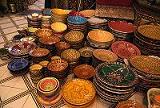
 |
Back to the Data Model
Hello, Barry!
First, I would like to thank and congratulate you for all the helpful information made available to the public of your website - FOR FREE!
I live in Brazil, a country with a special need for accessible education (not much available to the general public), so I recognize a treasure when I see one.
Your knowledge, put at our disposal for free is a true treasure for me and many others that will certainly visit your website from now on - after I tell friends about your job.
Not being a DBA, I have been trying to develop a flexible database for 5 or 6 years - without much success.
Aware of my limitations I have requested quotations from professionals who I thought would be able to do what I failed to,
but I could not afford to pay for the work of any of those top level professionals.
I would appreciate if you could give me advice on how to design a schema for a database which would allow me to make a website as flexible as the one used by www.newegg.com.
Please take a look at the site and you will see how many products are listed in hundreds of categories, and yet you will see how easily these products can be searched using their "Advanced Search".
Each attribute - which is different for every product category - can be filtered.
Looking at the huge quantity of items stored in their database, with different details needed,
I don't think they create a table for each product category - the database must be flexible to accommodate the different
product categories (and their special needs) without forcing anyone to re-design the database or increase the number of tables
on every time a new category is added. Clearly, the filters are automatically generated based on the categories presented.
The database must be made in a such way to allow it to be done.
Can you help me???
Thank you so much for any additional help you can give me.
Best regards,
Henrique Schroeder
Brazil
B. The Things of Interest, ('THINGS'), which will become Tables in the Database, include :-
B.1 Customers
B.2 Products
B.3 Refunds
B.4 Etc.
C. These THINGS are Related as follows :-
C.1 A Customer can buy zero, one or many Products.
C.2 A Product can be purchased by zero or one Customers.
D. Other Characteristics of these THINGS include :-
D.1 To be determined
E. Sample Data includes :-
E.1 To be determined
F. Typical Enquiries include :-
F.1 To be Determined
That is the end of the Statement of Business Rules.
Barry Williams
4th. October 2008
Principal Consultant
Database Answers
|
| |
|
|


